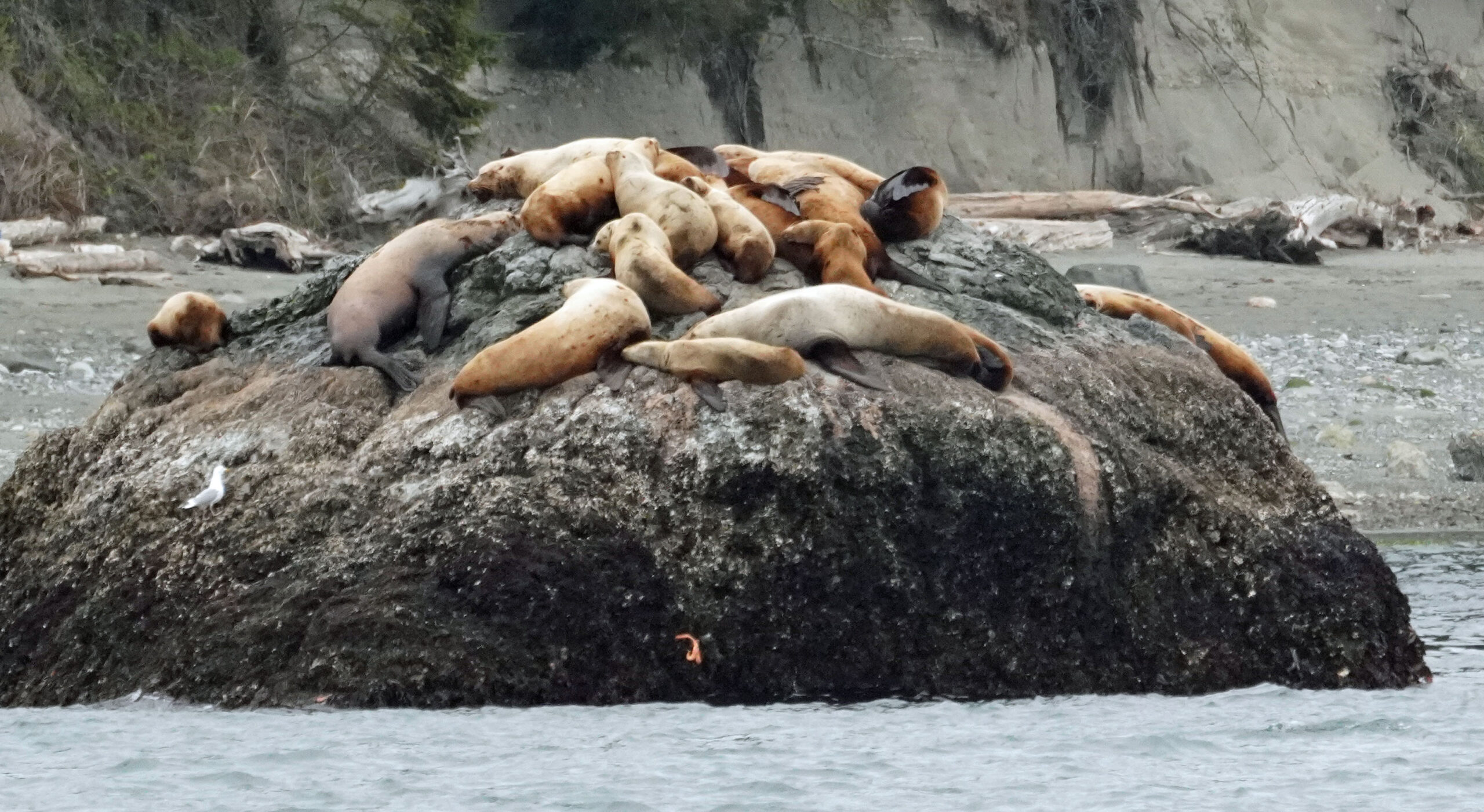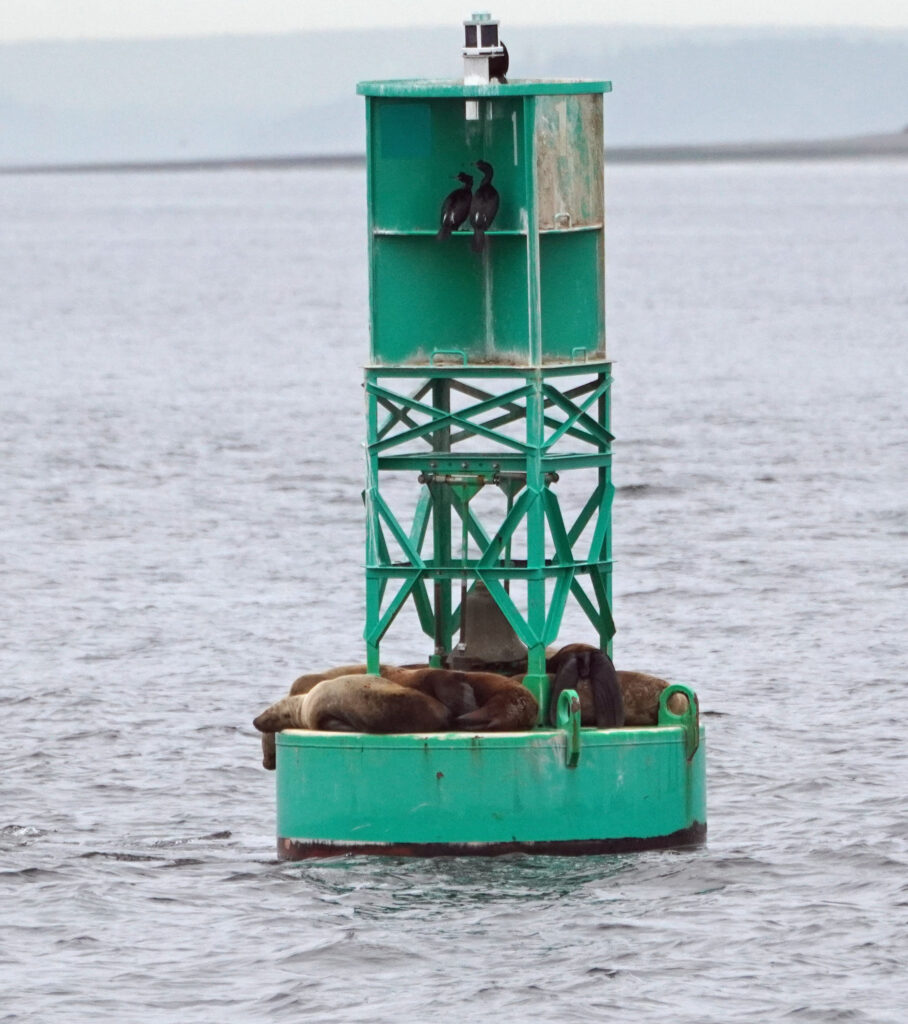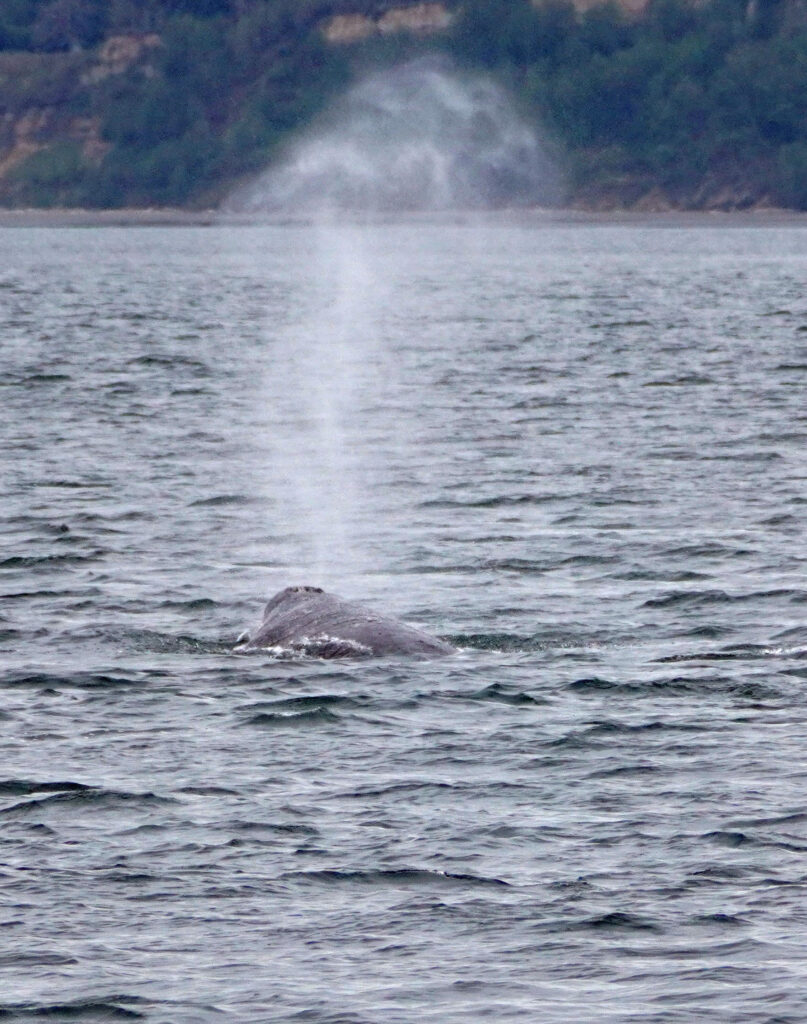On Saturday, 22 April, my wife and I went on a whale watching tour with the Puget Sound Express company in Port Townsend. And it was marvelous! I’ve been on a couple of other whale watching tours, including some on my own boat, but this was the best I’ve ever been on. The guys running this business have such great knowledge about Puget Sound and the wildlife out there that they even know when to stop and give everyone a chance to observe and film the animals. As you can see above, a couple of these pauses were very worthwhile. And while rolling along on this very comfortable ship you will also get entertaining educational lectures from whale watching experts. I highly recommend you book a tour with this company. Bring your camera of course. Binoculars, too. If you don’t have a bino they will give you one on the boat. Here is the link to their website: PugetSoundExpress.com Or call 360-385-5288.
Gray whales normally turn up in Puget Sound during spring while on their way to Alaska. Although they look pretty dark, they get that Gray Whale name due to bright parasite scars on their back. This thanks to their feeding habit. Rubbing the sea floor they will gobble up any small creature they expose, but will also eat invertebrates they can catch above the sea floor. This method must work very well. They get almost 50 feet long and up to 40 tons by feeding along the ocean bottom. Females are a little bigger than males.
Several species of sea lions live in ocean habitats around the world. And here in Puget Sound we have two species of sea lions that stay with us throughout the year. Known as “eared seals” due to that visible ear on the side of their heads, sea lions have rear flippers that expand out horizontally instead of the vertical up and down style of real seals. This gives them a much great ability to move on land or even to climb up on things. The Stellar Sea Lion is the largest of our sea lions. Males reach 10 feet in length and over one ton in weight. These sea lions have a range that extends from Japan to Russia and Alaska, and are reported now as two sub species. The California Sea Lion ranges from North Pacific to Gulf of California and the Galapagos Islands. And according to data from the Smithsonian National Zoo, each of these is a different sub species. Darker in color and smaller than the Stellar sea lion males get up to 7 feet in length and about 800 pounds. California sea lions have reputation and fame as the most vocal of all pinnipeds. They bark, growl, and make a lot of other noises above and under water. And they seem to love hanging out in channel marker bouys.
<
>





Leave a Reply
You must be logged in to post a comment.